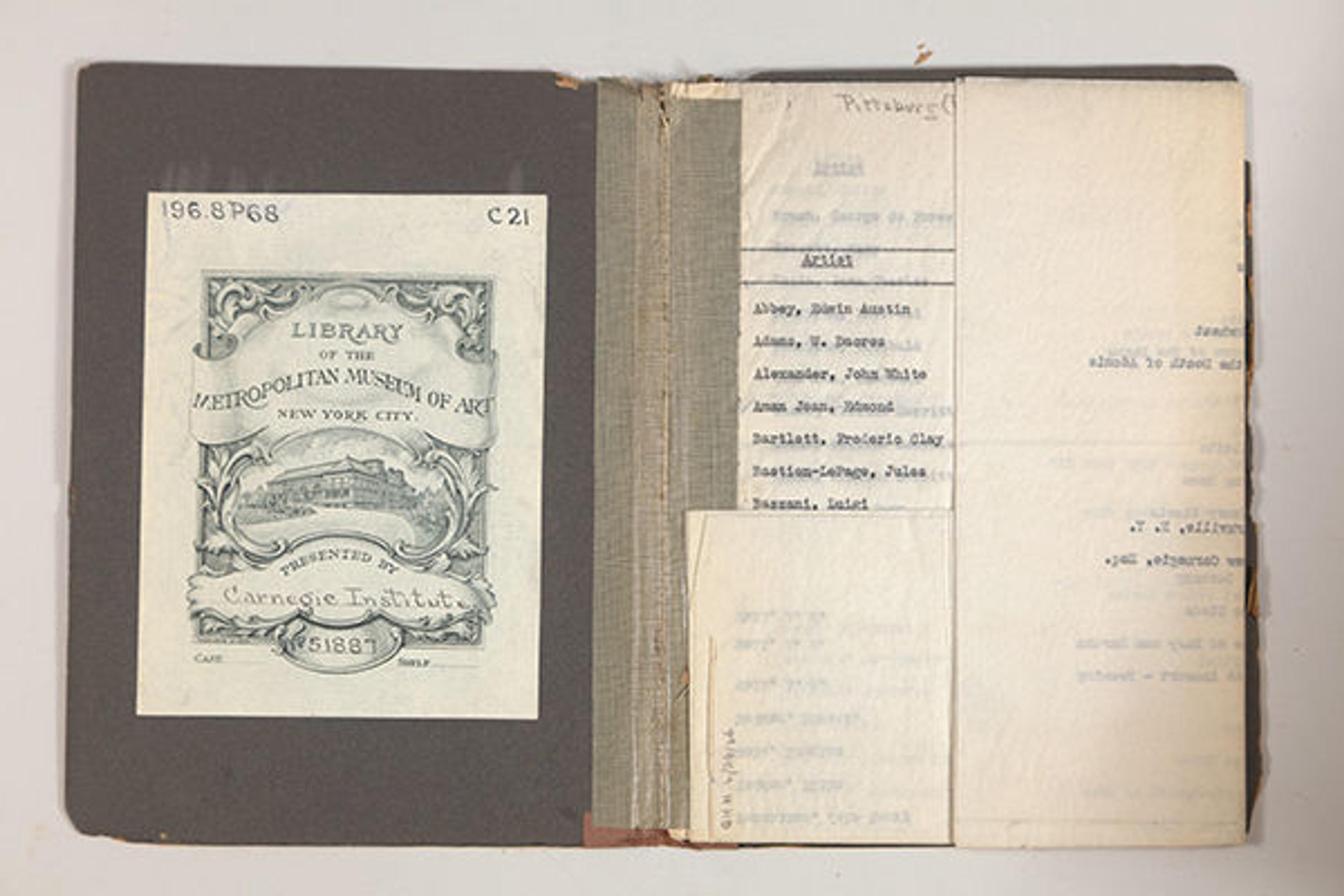Bookcloth spine repair. Dr. George Schaefer. Kunstdenkmäler im Grossherzogthum Hessen 1, vol. 1–2. Darmstadt, Germany, 1885
«In the first part of this blog series, I discussed some common but destructive historical home book repairs. In this post I'll look at some equally common (and destructive) historical library repairs.»
Libraries have had their own struggles finding cost-effective, efficient ways of repairing damaged books so that they can be safely circulated over and over again. Librarians, restorers, and commercial binderies have restored books for generations, long before the conservation profession existed. Here are a few examples of typical historic library repairs that are of interest and concern to library professionals today.
The book shown above is known as a half-leather binding—one with a leather spine and corners. As you can see, the original leather spine has been covered over or replaced by a new book cloth spine and a handwritten paper title label has been substituted for the original gold-tooled label. The top-right corner of the book cover is also missing, but has not been repaired. Today, conservators preserve all original parts of a book and replace damaged parts with subtle repairs that do not obscure the original binding and only add physical strength behind the scenes. For example, the repairs to this binding would have been placed under the original binding materials and the broken corner would be built up and covered with new compatible materials.
Nineteenth- and Early Twentieth-Century Library Repairs

French Sale Catalogues, vol. 2, 1928

French Sale Catalogues, vol. 2, 1928
I refer to this type of book as a composite binding—a bookbinding created by library binders as a solution for binding disparate issues of auction catalogues, periodicals, and exhibition catalogues. From a conservator's perspective, it is difficult to imagine a less effective binding solution. This is because the books are oversewn in this structure, which severely limits the book's ability to open and eventually perforates the pages. Also, the gaps created by binding differently sized books promotes distortion and allows dirt to enter the interior of the book. Today, we would suggest binding individual issues or boxing the set of books in a custom-fitted preservation enclosure.

Typescript. Carnegie Institute Department of Fine Arts. Paintings in the Permanent Collection. Pittsburgh (PA), 1923
Another binding solution that has been used widely by libraries is the pamphlet binder. Better materials are now being used for their construction, but the books still need to be attached with water-based adhesive and cloth strips. This was a solution for binding items that could not stand on their own or were perceived to need extra support in order to be shelved and circulated. In many cases, the books were stab sewn and pages were folded before they were adhered to the cloth tabs. These bindings are damaging to the pages of the book, as the cloth strip is often stronger than the text paper. Slowly the pages will break off at the hinge edge, often resulting in a loss of text. Pamphlets that are stab sewn before being inserted into the hinge also do not open well. Early pamphlet bindings were also made of poor-quality board, as you can see here in areas where it is beginning to chip away at the edges. Today we would never fold items to fit into an enclosure.
I have shown you some of the challenges that book conservation staff face every day. Unlike many museum objects, books are used, and while we endeavor to practice prevention, books still get damaged and they need to be repaired and protected. Just like doctors, we endeavor to do no harm, yet subjective choices still need to be made when repairing books. What we have learned from the past informs our present decisions, and we try to find the fine line between use and preservation.
There are many regional preservation organizations that can help individuals make these decisions for their own library collections, including the Northeast Document Conservation Center, the Conservation Center for Art & Historic Artifacts, and LYRASIS.
Related Link
In Circulation: "It Seemed Like a Good Idea at the Time: Crazy Book Repairs, Part One" (December 16, 2015)
